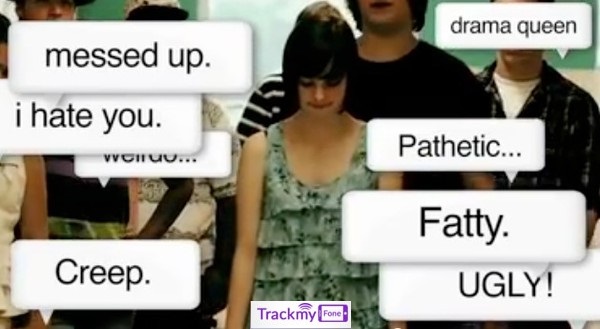Do you think there’ll be 1.75 billion smartphone users, nearly 40% of which are teenagers and nothing would ever go wrong? Not a chance. In reality, the cyberverse is just the same as a playground where there are the good kids, and then there are the bullies.
What is Cyberbullying?
Cyberbullying is not that different from offline bullying. Here, the bully may want to hurt the victim through
- hurtful Facebook comments
- harassing text messages
- impersonating a social media account for mockery
- constantly pestering on IMs
Although these are the most common cyberbullying means, they aren’t the only ones. Think of it this way–there are as many outlets for bullies as there are web portals. Ever scrolled through YouTube comments and read snarky posts about the video publisher? That’s cyberbullying. Ever been to a fansite for a book or tv show and seen kids calling each other names? That’s cyberbullying, too. Still, according to AllFacebook, social media remains the biggest “playground” for bullies.
http://allfacebook.com/files/2012/08/McAfeeCyberbullyingInfographic.jpg
Any time a kid is called a name, or harassed or threatened or has rumors being spread about them through a digital means (social media, text message, email) by another kid, it all qualifies as cyberbullying.
Is it as Harmful as Offline Bullying?
Parents generally assume that bullying on the internet could not be as bad as offline bullying. I suppose they are right in some ways. Because the face-to-face aspect is gone, the victim is at least protected from physical harm.
However, cyberbullying has proved to cause intense mental trauma. Being constantly picked on the internet transcends into the victim’s offline behavior, too. It may lead to anxiety, stress, even depression. And in many cases, it has led the victim to suicide. Take the case of Rebecca Sedwick, who was told to kill herself by bullies on Facebook. And she did.
Use this chart by Beyond the Bully for better insight on the differences.
http://beyondthebully.com/wp-content/uploads/2012/09/Cyberbullying-%E2%80%93-vs-%E2%80%93-Bullying.jpg
Just like in traditional bullying, cyberbullying voids the victim of enjoying the things they would normally like to do. Where they might have once liked using Facebook or posting a selfie on Instagram like the rest of their friends, they start avoiding it altogether. They fear they’ll be mocked on their wall posts, or receive mean comments on their pictures.
What’s worse is that while your home could be the safe harbor from face-to-face bullies, cyberbullying takes place inside your kid’s pocket on their smartphone or within the safety of their rooms on their laptops. And many times, both of them go hand in hand.
So yes, by all means, cyberbullying is no less harmful than offline bullying.
What to do When Your Kid is Cyberbullied
First off, you’ve got to look for signs that your kid is being bullied. Your child could be:
- Staying away from their computer completely, or
- Spending way too much time on it, obsessively reading the bullies messages
Other behavioral changes you should look for are
- Not wanting to leave their room
- A noticeable change in eating habits (eating too less or too little)
- A decreased interest in other activities
- Declining grades at school
The next thing you’ve got to do is report an authority. Every social media website gives you the option to report inappropriate comments, especially if they are life threatening.
Use this guide by ACMA to know exactly what to do.
Being cyberbullied can be an isolating, traumatic experience that your child might not feel too comfortable talking to you about. Which is why you’ll need to keep a regular check on their online activities to make sure they’re always safe!

Comments are closed.